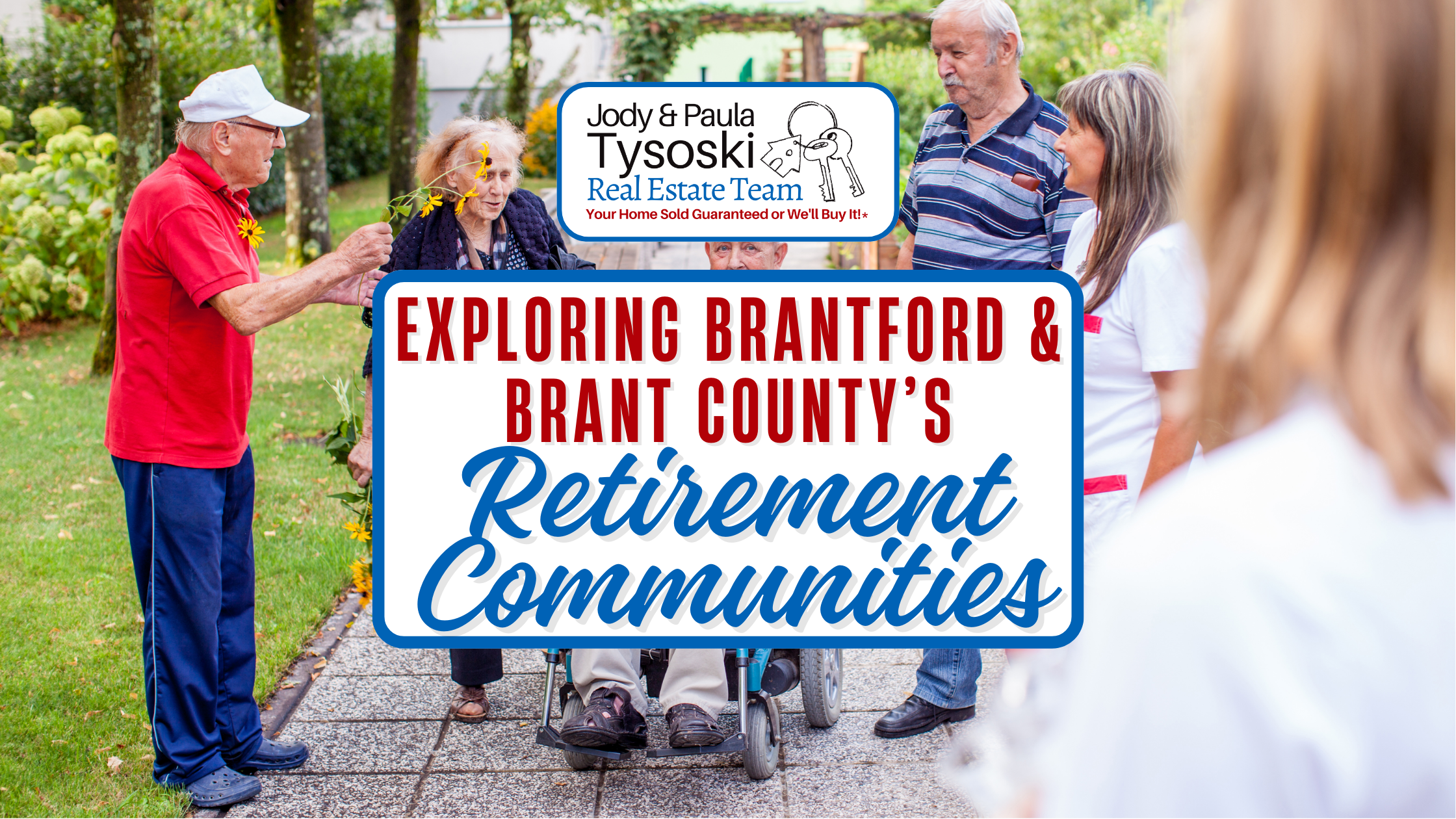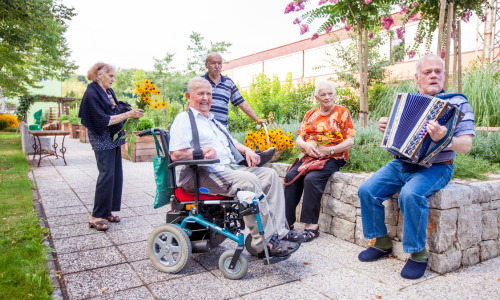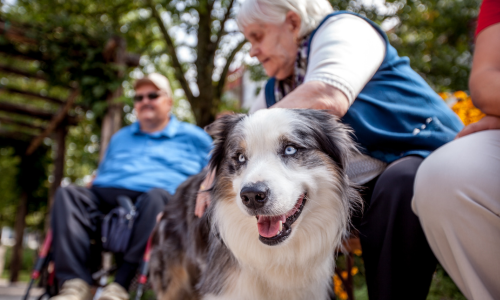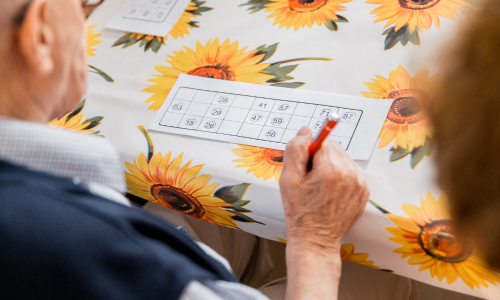
As we journey through life, we often begin to envision our golden years—a time to savor the fruits of our labor, pursue long-held passions, and enjoy the company of like-minded individuals. Retirement communities have become a popular choice for many seniors seeking a vibrant and fulfilling lifestyle during their retirement. In this blog, we will explore what retirement communities are, their benefits, and key factors to consider when choosing the perfect community for your needs.

Retirement communities, also known as active adult or 55+ communities, are residential developments designed exclusively for individuals aged 55 and older. These communities offer a variety of amenities, services, and activities tailored to the needs and interests of older adults. They provide an environment where retirees can lead an active and independent lifestyle while being surrounded by peers in a similar life stage.
Retirement communities have evolved significantly over the past century, reflecting broader changes in societal attitudes toward aging and senior living. Understanding this evolution provides valuable context for choosing a retirement community today.
The concept of retirement living dates back to ancient times, where some cultures established simple forms of care for their elderly. However, the modern idea of retirement communities began to take shape in the early 20th century. Initially, these were often modest housing arrangements or informal support systems provided by religious or charitable organizations.
The real transformation began after World War II, driven by increased life expectancy and a growing population of retirees. The 1950s and 1960s saw the emergence of the first planned retirement communities in the United States, designed to offer a more structured and community-focused environment for seniors. These early communities were typically focused on independent living and aimed to provide a supportive environment where retirees could enjoy an active lifestyle.
By the 1970s and 1980s, retirement communities began to diversify and expand their offerings. Developers started incorporating a wide range of amenities and services, such as fitness centers, swimming pools, and social clubs, into their designs. This period marked the rise of "active adult communities," which emphasized an engaging and active lifestyle for residents. The concept of "continuing care retirement communities" (CCRCs) also emerged, offering multiple levels of care within a single community, from independent living to assisted living and skilled nursing.
In the 1990s and 2000s, the focus shifted towards creating environments that cater to the varied interests and needs of a more diverse senior population. Modern retirement communities often include state-of-the-art facilities, wellness programs, and personalized care options. They have become more than just places to live—they are designed to be vibrant communities where residents can pursue hobbies, engage in lifelong learning, and maintain a high quality of life.
Today, retirement communities continue to evolve with a focus on technology, sustainability, and personalized care. Innovations such as smart home technology, telemedicine, and eco-friendly building practices are becoming more common. Additionally, there is a growing emphasis on inclusivity and diversity, with communities tailored to various interests and lifestyles, including those that cater to specific hobbies, cultural backgrounds, or health needs.
The evolution of retirement communities reflects broader changes in how society views aging and senior living. From their modest beginnings to the modern, amenity-rich environments of today, retirement communities have continually adapted to meet the changing needs and expectations of older adults. Understanding this history can help prospective residents appreciate the range of options available and choose a community that aligns with their desired lifestyle and needs.

Retirement communities foster a strong sense of belonging and camaraderie among residents. Living among individuals who share common interests and experiences often leads to the formation of lifelong friendships and a supportive social network.
You might want to include testimonials or success stories from current residents to illustrate this benefit.
These communities often feature a range of amenities such as fitness centers, swimming pools, golf courses, walking trails, libraries, and social spaces. Additionally, they may offer services like housekeeping, maintenance, and transportation, allowing residents to focus on enjoying their retirement.
Retirement communities provide a diverse range of activities and programs tailored to retirees’ interests. From educational classes and hobby groups to cultural outings and wellness programs, residents have ample opportunities to engage in fulfilling activities and pursue lifelong passions.
Designed with safety and security in mind, retirement communities often feature gated entrances, surveillance systems, and on-site staff to ensure a peaceful and secure living environment.

Consider the climate, proximity to family and friends, access to healthcare facilities, and the availability of recreational and cultural amenities in the area.
When choosing a retirement community, the surrounding local area plays a crucial role in enhancing the quality of life for its residents. Beyond the amenities and services offered within the community itself, the features and attractions of the local area can significantly impact your overall experience and satisfaction. Here’s why local community features are important and what to consider:
Proximity to parks and natural spaces can greatly enhance your daily life. Parks offer opportunities for leisurely walks, outdoor exercise, and social gatherings. They provide a serene environment for relaxation and can be a venue for community events, such as outdoor concerts or farmers' markets. For those who enjoy gardening or simply being outdoors, nearby green spaces can be a valuable addition to your lifestyle.
Cultural institutions, such as museums, art galleries, theaters, and concert halls, enrich your life by offering opportunities for continued learning and enjoyment. Regular access to these venues allows you to engage in cultural experiences, attend performances, and participate in educational workshops. Being close to such institutions means you can enjoy these activities without extensive travel, making it easier to integrate them into your routine.
The availability of shopping centers, restaurants, and cafes in the vicinity of your retirement community can greatly enhance convenience and enjoyment. Having diverse dining options and shopping amenities nearby means you can easily access everyday necessities and indulge in leisure activities. It also provides opportunities to socialize with friends and family in a variety of settings.
Access to quality healthcare is paramount in retirement. Nearby hospitals, clinics, and specialized medical facilities ensure that you can receive timely and appropriate care when needed. Proximity to these facilities can offer peace of mind and ease of access to routine check-ups, emergency care, and specialized treatments.
Local community features often include social clubs, volunteer organizations, and community centers that provide opportunities for engagement and interaction. Being part of a vibrant local community allows you to connect with others, participate in local events, and contribute to community initiatives. It fosters a sense of belonging and helps you stay active and involved.
Convenient transportation options are crucial for maintaining independence and mobility. Consider the availability of public transportation, ride-sharing services, and accessible roads when evaluating a retirement community. Easy access to transportation allows you to explore the local area, visit friends and family, and attend appointments or events without undue hassle.
When evaluating retirement communities, don’t overlook the importance of the local area. Features such as parks, cultural institutions, shopping and dining options, healthcare facilities, community engagement opportunities, and transportation accessibility all contribute to a richer and more fulfilling retirement experience. Choosing a community situated in a vibrant, well-equipped area can greatly enhance your quality of life and ensure that you enjoy all the benefits of your new surroundings.

Determine whether you prefer an independent living community or one that offers various levels of care, such as assisted living or memory care, to ensure your evolving needs can be met.
Discussing the differences between independent living, assisted living, and memory care with examples might be beneficial.
Evaluate the cost of living, monthly fees, and any additional expenses associated with the retirement community. Explore the financial structure and payment options to ensure they align with your budget and long-term financial goals.

Transitioning to a retirement community involves more than just choosing the right location and amenities; it also requires careful financial planning to ensure a smooth and stress-free transition. Understanding the costs associated with retirement living and how to budget effectively can help you make informed decisions and manage your finances wisely. Here are some essential tips and insights on budgeting for retirement community living and understanding financial agreements:
1. Assess Your Financial Situation
Before exploring retirement communities, take a comprehensive look at your current financial situation. Consider your income sources, savings, investments, and any other assets. This assessment will help you determine your budget and identify how much you can comfortably allocate for retirement living.
Consider working with a financial advisor to evaluate your assets and create a retirement budget that aligns with your goals and lifestyle.
2. Understand the Cost Structure
Retirement communities typically offer various cost structures, including entry fees, monthly fees, and additional charges. Familiarize yourself with these costs:
Entry Fees: Some communities require a one-time entry fee or buy-in, which can be substantial. This fee often contributes to the community’s amenities and services.
Monthly Fees: These fees cover ongoing expenses such as housing, utilities, maintenance, and some services. Monthly fees can vary based on the type of accommodation and level of care provided.
Additional Charges: Be aware of potential additional charges for services such as personal care, healthcare, or special activities. Understanding these costs helps you plan for any extra expenses.
3. Review Financial Agreements Carefully
Each retirement community has its own financial agreements and contracts. It’s crucial to review these documents thoroughly to understand what’s included in the fees and what additional costs may arise. Key aspects to examine include:
Refund Policies: Understand the community’s refund policies for entry fees or deposits if you decide to move out or if there are changes in your circumstances.
Inclusions and Exclusions: Clarify what is included in your monthly fees and what might incur additional charges. This could include amenities, services, or specific levels of care.
Contract Length and Terms: Review the length of the contract and any terms related to lease renewals, changes in fees, or termination conditions.
4. Compare Different Communities
Compare the costs and financial structures of different retirement communities to find the best fit for your budget and preferences. Take note of the services and amenities offered, as well as any additional fees that may be associated with each community.
Create a spreadsheet or checklist to compare key financial aspects and features of various communities to make an informed decision.
5. Plan for Future Expenses
Consider future expenses that may arise, such as potential healthcare needs or changes in your financial situation. Planning for these possibilities helps ensure you have adequate resources to cover any unexpected costs.
Discuss long-term care insurance or other financial products that may help cover future healthcare expenses with your financial advisor.
6. Seek Professional Advice
Navigating financial agreements and budgeting for retirement living can be complex. Seeking advice from a financial advisor or elder law attorney can provide valuable guidance and help you understand the implications of various financial arrangements.
Ask for recommendations or referrals to professionals who specialize in retirement planning and financial management for seniors.
Budgeting for retirement community living requires careful planning and a clear understanding of financial agreements. By assessing your financial situation, understanding cost structures, reviewing agreements, comparing communities, planning for future expenses, and seeking professional advice, you can make informed decisions that align with your financial goals and ensure a comfortable and enjoyable retirement.

Visit potential retirement communities to get a sense of the community's atmosphere, values, and the overall happiness and satisfaction of the residents.

When visiting retirement communities, evaluating the community culture is crucial to ensure it aligns with your values, preferences, and lifestyle. Use this checklist to assess various aspects of community culture and make an informed decision:
Community Atmosphere
Welcoming Environment: Observe if the staff and residents are friendly, approachable, and welcoming.
General Vibe: Assess the overall mood and energy of the community. Does it feel lively and engaging, or quiet and subdued?
Resident Engagement
Activity Participation: Notice how actively residents are participating in scheduled activities and social events.
Social Interaction: Look for signs of strong social interaction among residents. Are they engaging in conversations and group activities?
Staff Interactions
Staff Behavior: Observe how staff members interact with residents. Are they respectful, attentive, and supportive?
Resident Satisfaction: Speak with current residents to gauge their satisfaction with staff interactions and overall community support.
Cultural and Recreational Activities
Diverse Programs: Check for a variety of cultural, educational, and recreational activities offered. Are there programs that align with your interests and hobbies?
Event Calendar: Review the community’s event calendar to see how often activities are scheduled and if they cater to different interests.
Community Values
Core Values: Inquire about the community’s core values and mission. Do they emphasize inclusivity, independence, and well-being?
Resident Feedback: Ask residents about their experiences and how well they feel the community’s values align with their own.
Sense of Belonging
Resident Integration: Observe how new residents are integrated into the community. Are there welcome programs or orientation sessions?
Support Systems: Check if there are support systems in place, such as social groups, volunteer opportunities, or mentorship programs.
Community Involvement
Local Engagement: Find out how the community engages with the local area. Are there partnerships with local organizations, events, or volunteer opportunities?
Community Integration: Assess if residents have opportunities to participate in or visit local cultural and recreational facilities.
Personalization and Choice
Customization: Determine if the community allows residents to personalize their living spaces and participate in shaping community activities.
Resident Input: Inquire about how resident feedback is collected and used to improve the community.
Amenities and Facilities
Quality of Amenities: Evaluate the quality and condition of the community’s amenities, such as social lounges, fitness centers, and libraries.
Accessibility: Ensure that amenities are easily accessible to all residents, including those with mobility challenges.
Safety and Comfort
Security Measures: Check for security features and protocols to ensure residents’ safety.
Comfort Levels: Assess the comfort and cleanliness of common areas and private residences.
Visit Multiple Times
Different Times of Day: Visit the community at different times of day to get a comprehensive view of daily life and the community’s rhythm.
Special Events: Attend special events or activities to experience the community’s culture in various settings.
Additional Considerations
Resident Satisfaction Surveys: If available, review resident satisfaction surveys or testimonials for additional insights.
Community Governance: Understand how the community is governed and how decisions are made. Does the governance structure align with your preferences?
Evaluating the community culture during your visits is essential for finding a retirement community that fits your lifestyle and values. Use this checklist to thoroughly assess various aspects of community culture and make a well-informed decision that ensures a comfortable and fulfilling retirement experience.

Assess the availability and quality of healthcare services within or near the community. Consider the level of healthcare support offered and the ease of accessing medical facilities when needed.
Retirement communities offer an exciting and enriching lifestyle for seniors seeking an active and socially vibrant retirement. With an array of amenities, activities, and a strong sense of community, these communities provide a supportive and enjoyable environment for aging adults. By considering factors such as location, lifestyle options, finances, and community culture, you can find the perfect retirement community that caters to your needs and helps you embark on a fulfilling journey in your golden years.
Remember, retirement is not just an end but a new chapter waiting to be written, and retirement communities can be the perfect backdrop for your next great adventure.

Local Brantford and Brant Retirement Communities
Here's a list of Retirement Homes in our Brantford - Brant County Area and What each website has to say.
Chartwell Tranquility Place is a well-established retirement residence in North Brantford, offering a range of independent and independent supportive living options for a fulfilling and active retirement. Our dedicated and friendly staff are committed to making your life healthier, happier, and more fulfilling, ensuring your expectations are exceeded every day.
Seasons Brantford provides a full spectrum of living options, giving residents peace of mind knowing that assistance is available while maintaining the comfortable feeling of home. With a variety of accommodation choices, from townhomes to spacious suites with patios in the main residence, as well as a secure memory care area, residents can increase care services discreetly if needed in the future.
Amber Lea Place Retirement Community
Amber Lea Place has earned a reputation as a "Home Like" retirement community. We enhance our residents' lives through delicious meals, wellness programs, lifelong learning opportunities, and cultural events. Our goal is to surpass your expectations every day, ensuring you have a fulfilling and enjoyable retirement experience.
Brierwood Gardens retirement community is known for its active, friendly, and welcoming atmosphere. We offer a variety of recreation services and events regularly, including a hair salon and other modern amenities for your convenience. Experience exceptional service, lovely accommodations, and exciting activities, all in the heart of downtown Brantford, Ontario.
From the moment you arrive at Charlotte Villa Retirement Residence, you'll feel the warmth and support of our community. Enjoy exceptional service, lovely accommodations, and exciting activities. We offer all the style and convenience of living in downtown Brantford, Ontario, in a quiet and cozy setting.
Park View Retirement Community
At Park View Retirement Community, they believe your retirement years should be comfortable, fun, and worry-free. They provide the best quality care and comfort for their residents because they are like family to them. With their "Home with a Heart" motto, they put our hearts into everything they do, ensuring you feel at home in the community.
Are you ready to live your best life without the worry of chores? Riverview Terrace, located in the lovely and growing town of Brantford, Ontario, offers a beautiful residence close to all amenities. Discover why Riverview Terrace has been the residence of choice for many years, with its excellent services and comfortable living.
Live in a well-maintained historic property with all the modern conveniences. Building amenities include on-site parking and laundry facilities. Park Manor is located in the heart of a stately neighbourhood and near the Grand River waterfront trail, minutes from downtown, shopping, restaurants and major highways. Being so close to the Brantford General Hospital, Park Manor is an ideal location for medical professionals.
Stay active with events and activities planned by the Smokey Hollow Estates social committee Snow removal, lawn care and pest control On-site maintenance staff to take care of any home upgrades, emergencies, or small chores.Vacation services such as home monitoring and mail forwarding.
Queensview Retirement Community - Paris, Ontario
Discover a refined and active retirement solution in the beautiful location of Paris, Ontario. Enjoy nearby restaurants, nature trails, and boutique shops in a quaint and friendly community. With customized care in the main residence and carefree living, including meals and activities in the Villas, you'll experience the best of both worlds.
Revera Telfer Place Paris, Ontario
Telfer Place is home to spacious and bright studio suites, offering options for both independent and assisted living. We provide studio, one-, and two-bedroom seniors' apartments with full kitchens and private balconies. With our personalized care approach and a wide range of recreational activities, your physical and emotional well-being is well taken care of. Rest easy with 24-hour staffing and on-call medical care.
Grand River Estates - Paris, Ontario
Grand River Estates, prioritizes customer safety and satisfaction. Their values revolve around the three C's: Care, Compassion, and Compliance. Experience a fulfilling retirement in our lovely community, conveniently located near all amenities in the growing town of Paris, Ontario.
Brucefield Manor Retirement Lodge - Mount Pleasant, Ontario
Brucefield Manor is a beautiful century home offering all the modern conveniences needed for a happy and leisurely life. Located in a quiet neighborhood in the heart of Mount Pleasant, our accommodations include fully private suites, semi-private suites, and ward-style housing, ensuring comfort and choice for our residents.
Remember to conduct thorough research or reach out to these retirement communities directly for detailed information on their specific services, amenities, pricing, and availability. It's essential to visit and tour the communities to assess if they align with your preferences and requirements before making any decisions.

Here are 10 facts about living in a retirement community:
Social Connections: Provides ample opportunities for socializing and making new friends.
Active Lifestyle: Offers a variety of activities and amenities to keep residents engaged.
Maintenance-Free Living: Includes lawn care, housekeeping, and general maintenance.
Health and Wellness Services: Features on-site healthcare or partnerships with nearby providers.
Safety and Security: Prioritizes safety with secure entrances and emergency response systems.
Access to Amenities: Provides convenient access to restaurants, shopping centers, and recreational facilities.
Sense of Community: Fosters a supportive environment with social gatherings and shared interests.
Customized Care: Offers various levels of care to accommodate evolving needs.
Lifelong Learning: Includes educational programs and workshops for continued learning.
Peace of Mind for Families: Ensures a safe and supportive environment with necessary care services.
It's important to remember that each retirement community has unique features and offerings. Conduct thorough research, visit potential communities, and gather detailed information to make an informed decision that aligns with your lifestyle and preferences.
Choosing the right retirement community is a significant decision that involves more than just evaluating amenities and services; it's about finding a place where you can truly feel at home. By exploring the community culture, assessing the local features, and understanding the financial aspects, you can make an informed choice that aligns with your lifestyle and long-term goals. Remember that your retirement years should be a time of enjoyment, engagement, and fulfillment. With careful consideration and a thoughtful approach, you can find a retirement community that not only meets your practical needs but also enriches your life in countless ways. Embrace this new chapter with confidence, knowing that you’ve selected a community that will support and enhance your golden years.